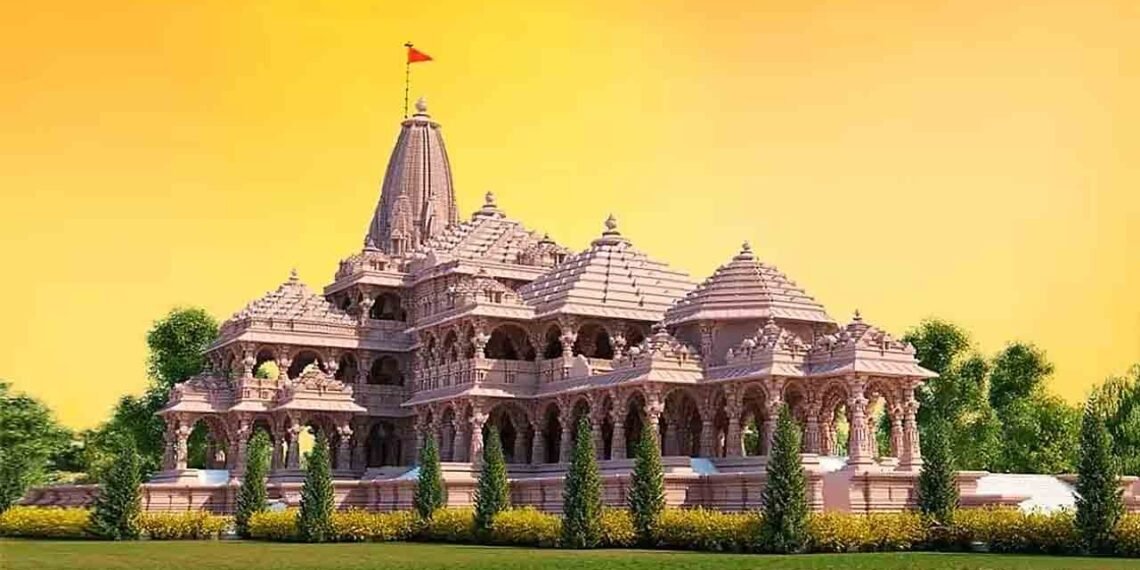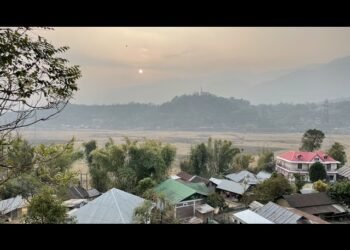On January 22, Ramlala will be installed in the sanctum sanctorum. Every Ram devotee was waiting for this day for a long time. Many special programs will be organized in Ayodhya from 22 January to 25 March.
The 110-acre Ram temple complex will feature the opening of Garbhagriha, which contains the idol of Ram Lalla. According to sources, the full temple complex won’t be finished until around 2025.
The most challenging aspect of building a solid foundation on which the enormous temple construction would rise is finished. “The soil was highly unstable and had extensive layers of debris, which presented an engineering difficulty because of the location’s history. According to reliable accounts, the first few months were spent researching the soil to determine the best approach to build a solid foundation for the temple.
Challenges
In order to remove debris and unstable soil, the site had to be excavated and dug 15 meters (45 feet) deep, or nearly four floors below the surface. To give you an idea of the scope of the operation, between 100 and 140 trucks moved daily, removing a total of 70 lakh tons of earth from the site.
The trust decided that the temple will have stone architecture in order to honor its historic past. In light of this, a committee of specialists was given the duty of locating a substance that might serve as a suitable replacement for stone with regard to the dug-up basis. The specialists developed a compressed engineering mix formula based on fly ash and concrete that would be used to fill the excavated site.
The Central Building Research Institute (CBRI) approved the material after testing it for strength at the civil engineering labs of IIT Chennai. The entire excavated site has been filled with the engineering mix through a layering procedure, with each layer being 8 inches thick and 44 of these layers total. The base for the plinth would be ready by September. It has been determined that the foundation’s strength is sufficient to endure nature’s whims for centuries at a time, including earthquakes.
Also read: https://powercorridors.in/explained-ram-mandir-pran-pratistha-complete-details/
Soil Investigations
For the purpose of evaluating structural stability, two agencies conducted soil investigations. The CSIR-NGRI conducted a research for the earthquake and paleochannel dangers at the same time. The studies included participation from institutions including IIT-Delhi, IIT-Bombay, IIT-Madras, IIT-Guwahati, CBRI-Roorkee, and SVNIT-Surat.
Modern Technology, Ancient Aesthetics
Only stone from Rajasthan’s Bansi pahad area would be used for the complete temple edifice, except from the aggregate mix for the dug base. The National Green Tribunal had temporarily prohibited quarrying at the site, which presented a problem for the Trust there as well. Fortunately, the Supreme Court lifted the ban, which created some delay, and stone acquisition got underway as soon as possible.
Additionally, in accordance with the Ram temple movement’s feelings, the stone pillars that have been in the works for the past three decades will be appropriately incorporated into the new building. The Ram temple trust also decided against using steel in any way, respecting the designs’ long history.
Therefore, copper would be used to link the temple’s stone pillars. On the day of Ram Navami, the sun would shine directly on the deity at noon, which is another historical aesthetic that will be incorporated into the design.
This is a feature that already exists in many historical temples across India including the Sun temples at Modera (Gujarat) and Konark (Odisha), and a team of scientists and astronomers has been consulted to get this ancient scientific heritage of Indian culture incorporated.
The multi-facilitated temple complex
There will be numerous amenities at the Ram temple complex for visitors, worshippers, sadhus, and sants, and plans are being developed to handle a visitor influx of up to 5 lakhs per day during holidays like Ram Navami. The entire infrastructure in and around the temple complex would be designed with the number of tourists in mind as Ayodhya is set to become a new pilgrimage destination for believers from all across the nation.
The temple trust is in the process of obtaining about 40 acres of additional land, in addition to the 67 acres that were bought following the Supreme Court order in November 2019, to make room available for all the infrastructure. The complex would also include administrative buildings, an archives center, a research center, and amenities for sadhus and sants in addition to pilgrims.
Museum of Ramayana
A state-of-the-art museum on Lord Ram’s life and times, including the contemporary status of the spread of the story of Ram around the world would be a unique feature of the Ram temple complex.
The department of science and technology is collaborating with a group led by renowned supercomputer scientist Dr. Vijay Bhatkar on a museum that will use cutting-edge technology to appeal to younger and international audiences. Through the use of digital technology, it would demonstrate the Ramayana and Ram Katha’s influence and influence on people all over the world.
Also read: https://powercorridors.in/indore-the-cleanest-indian-city/
Story of Lord Ram
Carvings depicting various events from Lord Ram’s life could be found on the walls, pillars, and other structures of the Ram temple complex. The stories that shall be inscribed on whatever portions of the temple are being chosen by a commission of saints.
In addition to the VHP, a committee led by Swami Sachidanand Joshi has been tasked with making recommendations, and the Ram Temple Trust will make the final decision.
Donations
Over Rs 3,000 crores have already been raised since the Trust began donations for the temple’s construction last year; all of this money is in the Trust’s bank account. According to sources, this is already significantly more than the Rs 900–1,000 crores required for the Ram temple’s construction.
As the Trust does not yet have FCRA clearance for overseas donations, all of this money has been donated from within India. The software company Tata Consultancy Services (TCS) has been charged with developing software for donations that would provide fast receipts for tax and other purposes after an application was lodged with the Union Home Ministry a few months ago.













